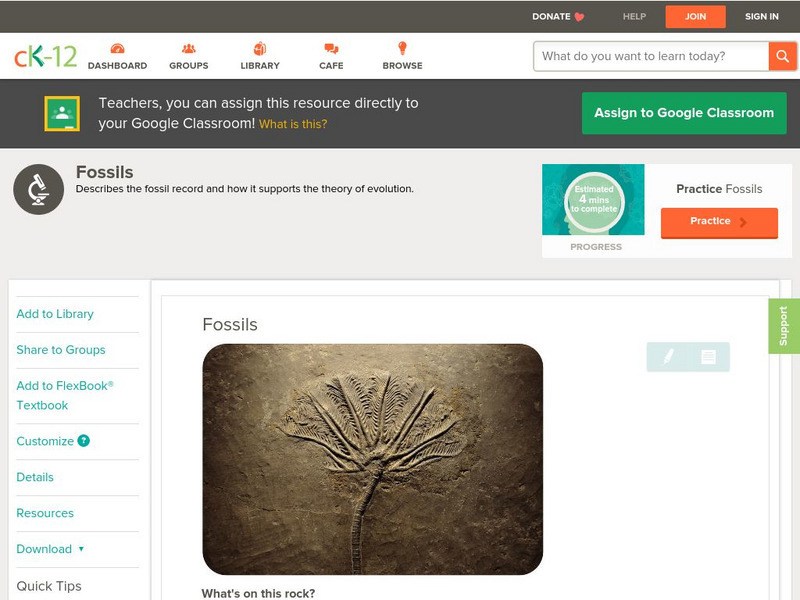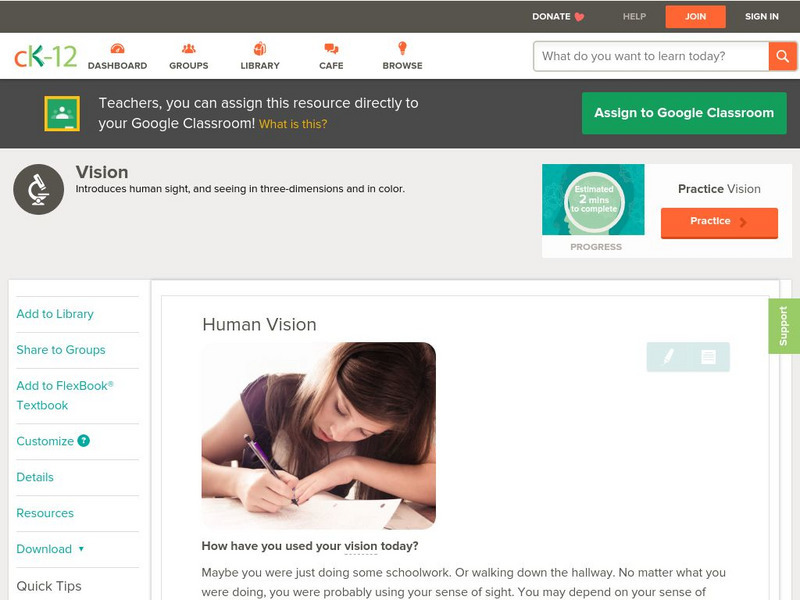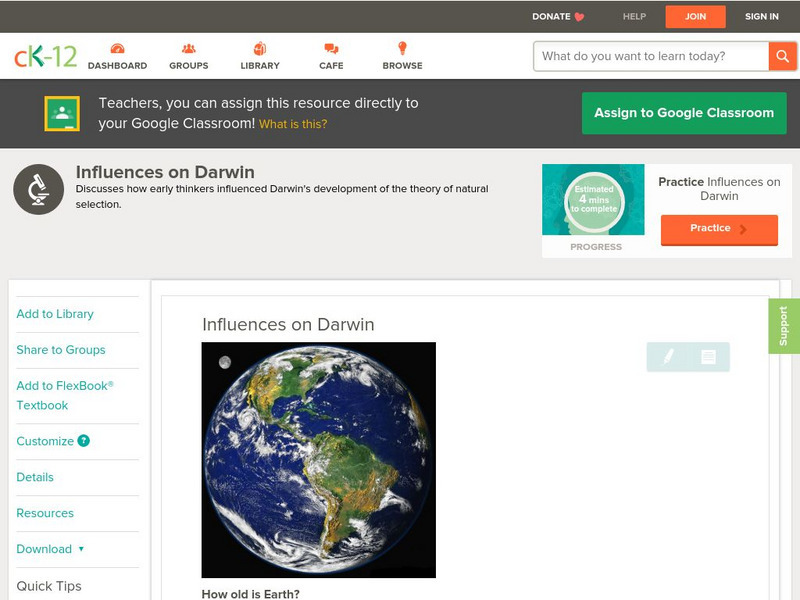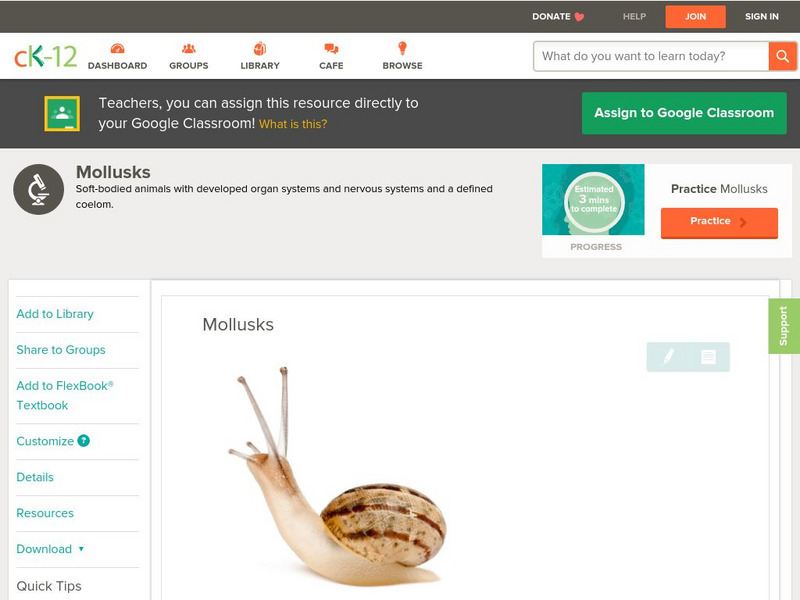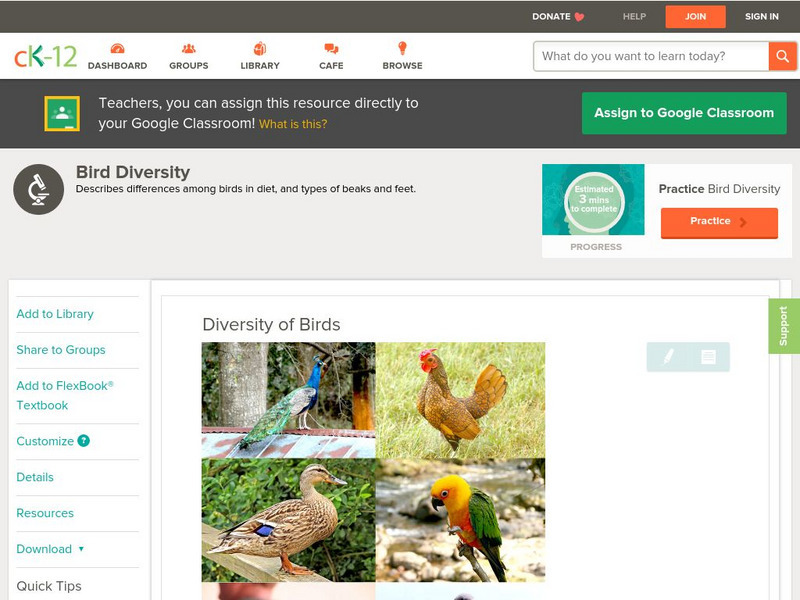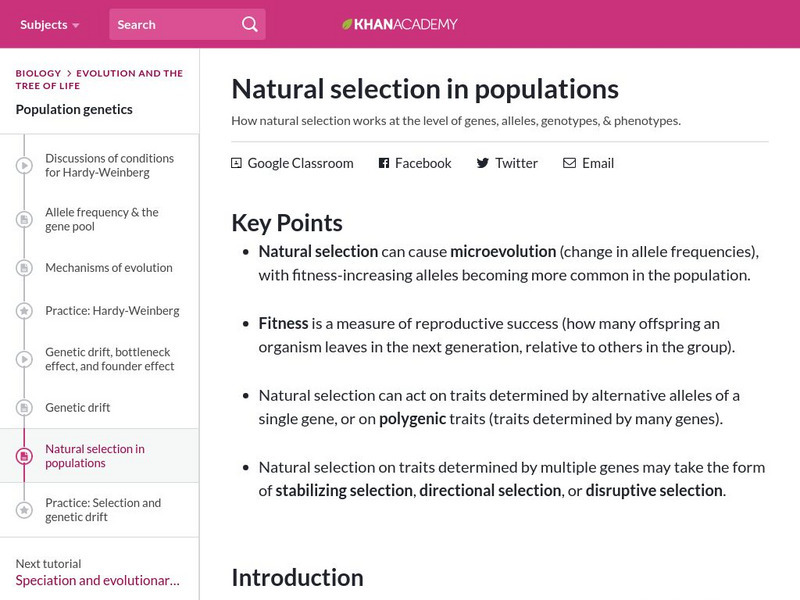ClassFlow
Class Flow: Adaptations in the Animal World
[Free Registration/Login Required] Learn about how animals adapt through evolution and how some plants and animals are becoming extinct.
American Institute of Biological Sciences
Action Bioscience: Malaria, Algae, Amoeba and You: Eukaryotic Relationships
Researchers are considering more recent findings of eukaryotes and their phylogeny. Investigate the insights to understand that there may be more progress found in determining the relationships to other eukaryotes.
American Institute of Biological Sciences
Action Bioscience: Natural History Museum Collections in the 21st Century
Discover why some people feel that natural history museums are more import now than they have ever been. Familiarize yourself with some of the challenges these museums are facing.
Other
Fossil Museum: Paleobiology
This table is an overview of the appearance and extinction of major groups of organisms through geologic time.
Blackdog Media
Classic Reader: Origin of Species by Charles Darwin
Read the full text of "Origin of Species", considered to be the foundation of evolutionary biology, by Charles Darwin on this site.
CK-12 Foundation
Ck 12: Life Science: Fossils
[Free Registration/Login may be required to access all resource tools.] Fossils are the preserved remains of animals, plants, and other organisms from the distant past. By studying fossils, evidence for evolution is revealed....
CK-12 Foundation
Ck 12: Life Science: Natural Selection
[Free Registration/Login may be required to access all resource tools.] The theory of evolution by natural selection means that the inherited traits of a population change over time. Inherited traits are features that are passed from one...
Other
Principia Cybernetica Web: Punctuated Equilibrium
Starts with a definition of Punctuated Equilibrium, followed by an explanation of this "Observation," and how it fits with other evolutionary theory.
Other
Perth Museums
This site describes 14 of Australia's museums. No links are provided, only information and addresses.
Other
University of Chicago: Dinosaur Extinction
This theory from the University of Chicago of dinosaur extinction revolves around the concept of plate tectonics, the movement of the continents over a sort of liquid around the planet.
Other
The National Museum of Finland
This site gives a brief overview of the museum. Address and phone number are given with links to a little more information.
Institute and Museum of the History of Science
Institute and Museum of History of Science: Museo Galileo
This site can be viewed in either English or Italian. Many links can take the viewer to more information on the museum.
CK-12 Foundation
Ck 12: Life Science: Human Vision
[Free Registration/Login may be required to access all resource tools.] Sight, or vision, is the ability to see light. It depends on the eyes detecting light and forming images. It also depends on the brain making sense of the images, so...
American Institute of Biological Sciences
Action Bioscience: Evolutionary Biologists Protect Madagascar's Wildlife
Madagascar is a haven for biodiversity and therefore admired and heavily researched by scientists. Check out how researchers are working to protect the environment of this African island.
CK-12 Foundation
Ck 12: Life Science: Influences on Darwin
[Free Registration/Login may be required to access all resource tools.] When Darwin returned to England at the end of his voyage, he did not rush to announce his discoveries. He did not want to present any ideas unless he had strong...
CK-12 Foundation
Ck 12: Life Science: Mollusks
[Free Registration/Login may be required to access all resource tools.] Mollusks are invertebrates that usually have a hard shell, a mantle, and a radula. Learn more about mollusks in this learning module produced by CK-12.
CK-12 Foundation
Ck 12: Life Science: Diversity of Birds
[Free Registration/Login may be required to access all resource tools.] About 10,000 bird species belong to 29 different orders within the class Aves. The diversity among birds is striking. Birds can vary greatly in size and color. Some...
Khan Academy
Khan Academy: Natural Selection in Populations
How natural selection works at the level of genes, alleles, genotypes, & phenotypes.
Khan Academy
Khan Academy: Species & Speciation
Find out what defines a species, and learn how new species can arise from existing species.
Khan Academy
Khan Academy: Phylogenetic Trees
Learn what a phylogenetic tree is, Learn how to read phylogenetic trees and determine which species are most related.
Khan Academy
Khan Academy: Building a Phylogenetic Tree
Understand the logic behind phylogenetic trees. Learn how to build a tree using data about features that are present or absent in a group of organisms.
Soft Schools
Soft Schools: Diversity Quiz
Take this interactive, multiple-choice quiz over ecological biodiversity, then review your score and any missed questions at the end.
Encyclopedia of Life
Encyclopedia of Life: Amphibians
Thorough resource investigates amphibians with a description, pictures, and maps. Includes facts on ecology, evolution, biology, and external links.
CK-12 Foundation
Ck 12: Plix Series: Comparative Anatomy: Comparative Embryology
[Free Registration/Login Required] Match the animals with their embryos and answer questions about their evolutionary ancestry.







